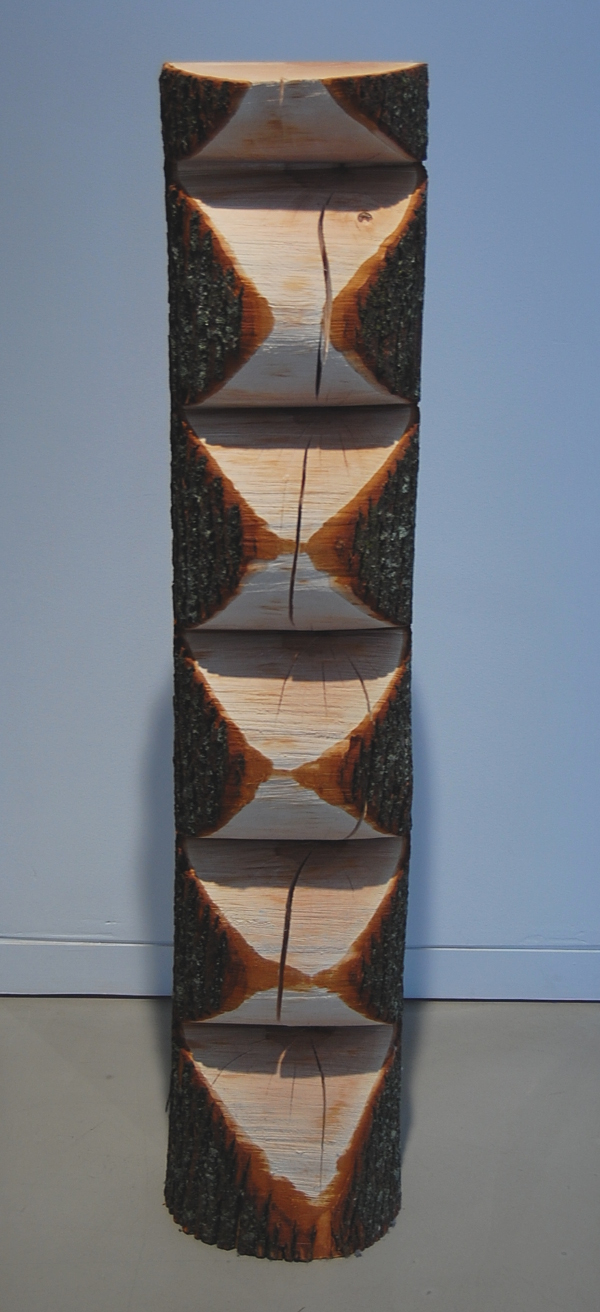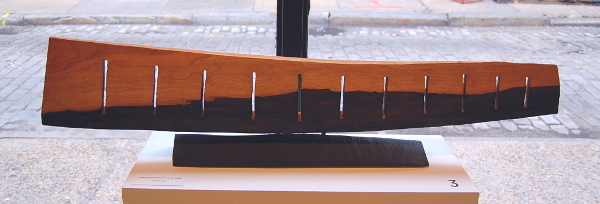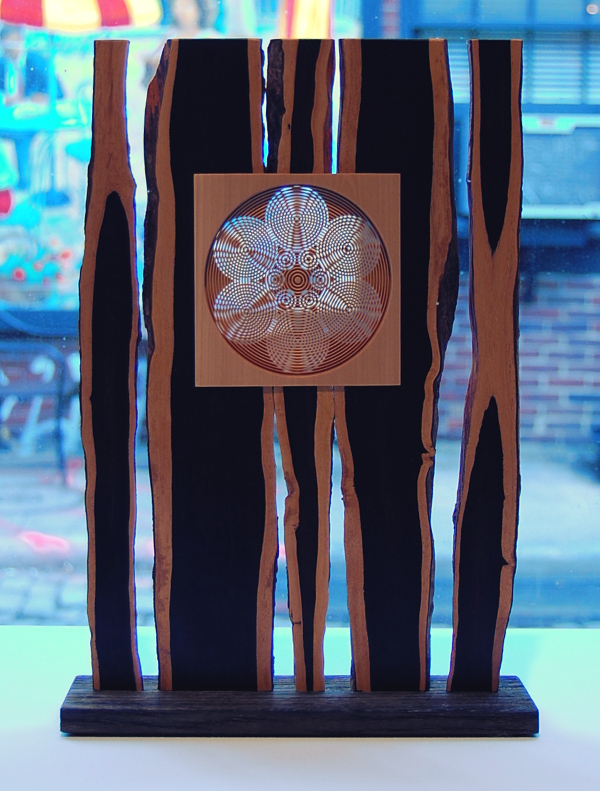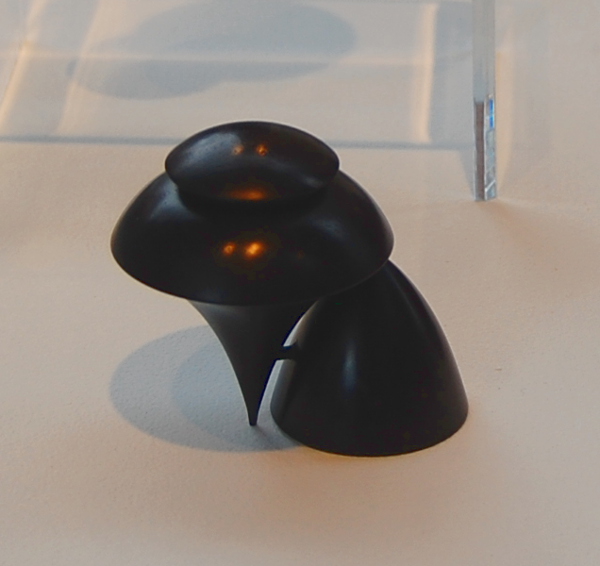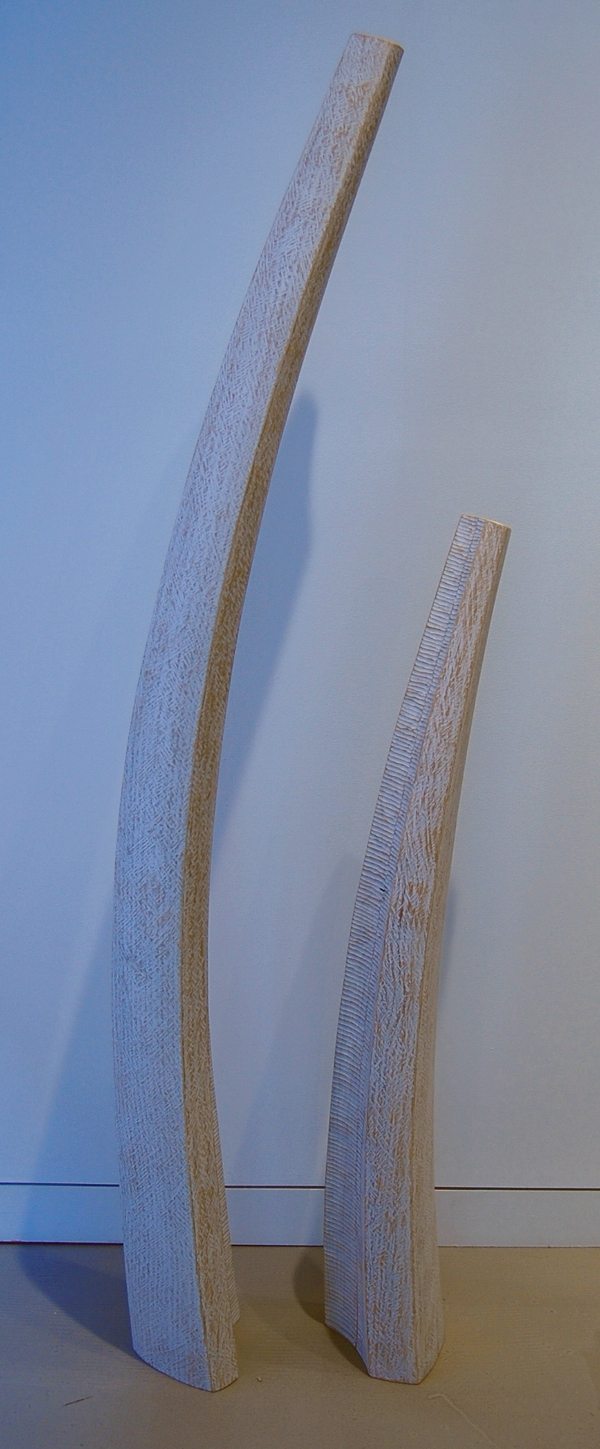
Mark Gardner with Hans and Jakob Weissflog at the Center for Art in Wood
The Center for Art in Wood in Old City (formerly the Wood Turning Center) is a non-profit community space that, since its inception in 1986, has provided wood turning, woodworking and exhibition opportunities for local artists working in the medium of wood. Currently, the Center is hosting a two-part show in its first-floor gallery, featuring new work by Mark Gardner and a variety of detailed pieces by father and son Hans and Jakob Weissflog.
Mark Gardner’s inclusions comprise his show entitled “Call and Response,” which is made of sculptures he created for his Windgate Residency at SUNY Purchase. During his time there, Gardner spent roughly four months focusing on his process nearly uninterrupted. The results are 21 mostly large-scale (taller than a person) wooden structures that stand vigilantly around the room.
Mark Gardner, “Coulmn.”
An exhibition with a name like “Call and Response” for a body of wood art seems a bit off target, but upon closer examination, it mirrors Gardner’s process quite well. Instead of diligently sketching out or planning his artworks ahead of time, this artist instead participates in a dialogue of sorts with the material in question. Gardner delves into each section of wood as a unique form, and from there the shapes and intricacies of the art emerge as he carves.
Mark Gardner, “What Were You Swimming Away.”
Many of the objects created by Gardner are understandably still very tree-like. With a starting point of a formerly living substance, these sculptures in many ways reflect the towering organisms they once were. The show is dotted by these spires, which remind of both majestic forest scenes and vast cityscapes simultaneously. Particularly telling of this style are Gardner’s “2 Ash Forms,” which rise and bend toward the sky, covered in frosty white paint and gashed, textured surfaces. Others, while still vertical, deviate a bit from this model. The piece “Column,” for example, is somewhat more squat and stout than its ash cousins, but includes a series of notches and ridges along its front side that display interior splits in the wood, as well as heavily contrasted shadows.
Mark Gardner, “Horizon.”
Elsewhere, Gardner experiments more with flatter forms, such as the abstract seascape “What Were You Swimming Away.” Here, greenish waves are formed from separate chunks of rounded wood and topped with a crescent-shaped boat form. Others like “Horizon” are just that – similar to his towers but horizontal. Here, a line in the center of the piece divides the perceived sky and sea, while rectangular holes in the wood allow light to filter through from behind in lieu of a sunset.
Hans Weissflog, “Star Wall.”
Hans and Jakob Weissflog provide content which is almost directly opposed to Gardner’s work. Their sculptures are tiny, clearly pre-planned, and seem at times impossibly complex. “Star Wall,” for instance, is tiny and flat, composed of a ragged slice of two-hued African blackwood with a square central frame. In the square rests an intricate and delicate looking starburst pattern, which opens through to the other side of the wall. It appears as if Hans had constructed a mesh screen from a slice of wood, and serves to boggle the mind and entice the eyes with its geometric precision.
Jakob Weissflog, “2” Round Points Box.”
Jakob creates smoother forms that often double as boxes. They vary in shape from teardrops and sharp, pointed pieces to cylinders, cones, and even the outline of a bird. The planetary images of his father’s pieces seem to inform his more rounded segments, and in one of their tiny sculptures, they even collaborate on a ball-within-a-ball, which seems not unlike a nesting doll in spherical form.
Whether intrigued by the minuscule and mind-boggling artworks by Hans and Jakob Weissflog, or dwarfed and confronted by the monoliths of Mark Gardner, this dual show offers plenty of contrast in the process of woodworking. The show will be on display through May 25.
The Center for Art in Wood is located at 141 N 3rd St., Philadelphia; 215-923-8000; centerforartinwood.org.
Recent Content
-
Artsarticle ·
-
Artsarticle ·
-
Artsarticle ·
